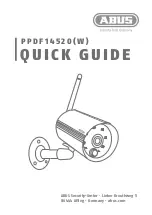
Compression
There are many levels of RedCode compression available on the camera and they are expressed as ratios.
The lower the ratio, the lower the compression. There are pros and cons to using high or low
compression.
The following table illustrated estimated shoot times @ 4K on a 64GB SSD for common compressions.
Shooting 4K HD will yield marginally longer shoot times since resolution is slightly lower.
6:1
7:1
8:1
9:1
10:1
4K 1.9:1
23 min
27 min
31 min
35 min
38 min
8:1 should be considered the default data rate for 4k cinema style shooting, this will give you almost %25
extra record time over the maximum quality of 6:1 with little to no visual impact. Documentary or other
uses can use 9:1 to 10:1 as default which little to no real impact on documentary aesthetics (where small
amounts of noise and compression are more acceptable). In both shooting styles compression can be
pushed to gain more record time on the media. Red says compression up to 10:1 will have very small
impacts on visual quality. Using compressions beyond 10:1 might be acceptable for your project – but be
sure to shoot tests so you know what to expect. If you do not intend on finishing in 4K, but instead to
output HD or 2k only feel free to use 10:1 as your start point, as most noise will be lost when shrinking
the image.
Time Base Frame Rate
Use 24 fps, unless you have specific reasons to use a different rate. Slow motion effects are achieved
through the varispeed menu option. Be sure to match the Sound Devices audio recorder to 24 FPS as
well. 24 fps will mean no conversions needed for playback at Parklane. 24 fps is also directly compatible
with BluRay discs. For DVD output you will need to pull down your finished project (audio and video)
%0.1 to 23.976 fps (also known standardly as 24P). This can be done with Adobe Media Encoder.
Shooting in 24fps also means you do not have to worry about certain shutter speeds causing the exposure
to flicker. When using 23.98 fps, only shutter speeds of 1/60, 1/40, and 1/30 will give %100 flicker free
results.
Camera Looks
Like the Canon 60D, users can customize the output of the Red One and Scarlet. These
look
settings are
stored as
metadata
and applied to RAW image data to show an RGB image based on user preferences.
Unlike the Canon 60D Red looks are
non destructive
and can be changed
in post (via metadata)
with
no
change to the original R3D files.
The only time looks are permanent is when the user outputs a RGB video file, such as a ProRes Quicktime
(.MOV).
Looks can be constructed in RedCineX Pro and uploaded to the camera for preview of your custom looks
under specific shooting situations.
Red's video tutorial for building looks and uploading to the camera:
http://www.red.com/learn/workflow/redcine-x-saving-looks-camera






























